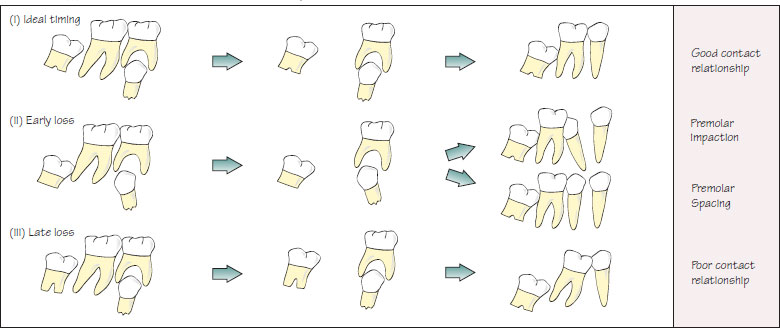29
Poor prognosis first permanent molars
Figure 29.1 (A) Timing of the extraction of mandibular first permanent molars.

Figure 29.1 (B) Cases later requiring space for relief of crowding or overjet correction.

Figure 29.1 (C) Compensating extractions.

The first permanent molars are considered to be the most caries-prone teeth in the permanent dentition probably because of their early eruption and exposure to the oral environment. These teeth can also be affected by hypomineralisation/hypoplasia and may be ankylosed in rare cases.
During the mixed dentition stage of dental development, general dentists and orthodontists may encounter patients with poor prognosis first permanent molars. In this situation, extraction of the teeth and space closure or use of the extraction space for future orthodontic treatment should be considered. This chapter provides guidelines about treatment planning for patients in the mixed dentition stage, who have first molars with a poor prognosis.
Consequences of loss of mandibular first permanent molars
Ideal timing (Figure 29.1Ai)
The ideal developmental stage for enforced loss of first permanent molars is when the furcation of the second permanent molar is just beginning to form which normally corresponds to a chronological age of 8–9 years. Loss at this stage usually results in satisfactory spontaneous space closure and the establishment of a good contact point relationship between the second molar and second premolar. There will be some spontaneous resolution of premolar crowding and the third molars will almost certainly erupt if they are present.
Early loss (Figure 29.1Aii)
Extraction before the age of 8 years often results in significant distal migration of the second premolar which may then become impacted against the second molar. This migration occurs because/>
Stay updated, free dental videos. Join our Telegram channel

VIDEdental - Online dental courses


